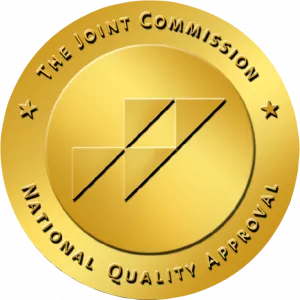Suboxone withdrawal can be challenging both physically and emotionally. In this article, Avenues Recovery shares an overview of common Suboxone withdrawal symptoms, how long withdrawal typically lasts, and coping strategies.
What Is Suboxone?
Suboxone is a prescription medication used in the treatment of opioid addiction. It contains a combination of two active ingredients: buprenorphine and naloxone, and is typically administered under the tongue as a film or tablet. The medication is part of a comprehensive approach to opioid addiction treatment known as medication-assisted treatment (MAT), which combines medication with counseling and behavioral therapies to address the physical and psychological aspects of addiction. Suboxone is often prescribed in a controlled and supervised setting to support individuals in their journey toward recovery from opioid dependence. Despite its effectiveness, Suboxone can be addictive, and it produces similar withdrawal effects to other opioids if it is quit cold turkey.
Common Suboxone Withdrawal Symptoms
Suboxone withdrawal symptoms can vary in intensity and duration, and may include:
- Flu-like symptoms: Muscle aches, fever, chills, and sweating.
- Gastrointestinal symptoms: Nausea, vomiting, diarrhea, and abdominal cramps.
- Mood changes: Anxiety, irritability, depression, and mood swings.
- Insomnia: Difficulty falling asleep or staying asleep.
- Yawning and runny Nose: Uncontrollable yawning and a runny nose.
- Dilated pupils: The pupils (black part) of the eyes may appear larger than usual.
- Goosebumps: This is sometimes referred to as "gooseflesh".
- Heart issues: Heart issues include increased heart rate and blood pressure.
- Psychological symptoms: Anxiety, irritability, restlessness, and mood changes.
- Concentration: Difficulty concentrating.
- Drug Cravings: Craving Suboxone.
The above are some of the side effects of Suboxone withdrawal. Attempting to stop Suboxone use without proper medical guidance is quite risky. Stopping cold turkey may lead to severe withdrawal symptoms or a relapse into opioid use. If you or a loved one suffers from Suboxone abuse or withdrawal symptoms, please reach out to us at Avenues Recovery for information on our addiction recovery programs.
When Does Suboxone Withdrawal Start?
Withdrawal from Suboxone can start at different times depending on factors such as the individual's tolerance, the duration of Suboxone use, and the dosage. Withdrawal symptoms from Suboxone may begin within 12-48 hours after the last dose. It's important to note that the withdrawal timeline can vary from person to person.
How Long Does Suboxone Withdrawal Last?
The duration of Suboxone withdrawal can vary from person to person, depending on factors such as the individual's overall health, the length of time they have been using Suboxone, the dosage they were taking, and their method of discontinuation. Even though Suboxone is commonly used to help individuals taper off opioids, withdrawal symptoms can still occur when discontinuing its use. Individuals who used Suboxone for an extended period or at higher doses may experience a more prolonged withdrawal process.
Suboxone Withdrawal Timeline
|
Time Frame |
Details |
|
0- 48 hours |
Withdrawal symptoms typically begin within the first 12- 48 hours after the last Suboxone dose. |
|
72 hours |
Withdrawal symptoms peak around 72 hours after discontinuation. |
|
Up to one week |
Muscle aches, mood swings, and insomnia. |
|
One Month |
Cravings may begin. These will lessen over time. |
|
Weeks or Months |
Some people may experience post-acute withdrawal syndrome (PAWS) with milder symptoms for weeks or months. |
What Helps With Suboxone Withdrawal?
Here are tips on how to cope with Suboxone withdrawal symptoms:
Medical Supervision:
Withdrawal can be intense, so Suboxone detox must be supervised by a healthcare professional, such as a doctor or addiction specialist. They can monitor your condition and provide appropriate interventions.
Gradual Tapering:
Work with your healthcare provider to create a tapering plan. Tapering allows the body to adjust gradually to lower levels of the medication and helps minimize withdrawal symptoms. Tapering your dosage can take several weeks or even months.
Support System:
Surround yourself with a supportive network of friends, family, or a peer support group. Having people to talk to and lean on is crucial during this challenging time.
Hydration and Nutrition:
Stay hydrated and maintain a healthy diet. Proper nutrition can support your body during the withdrawal process.
Rest and Sleep:
Get plenty of rest. Your body needs time to recover, and adequate sleep boosts your physical and emotional well-being.
Exercise:
Engage in light exercise if possible. Physical activity can help improve your mood and reduce anxiety.
Distraction Techniques:
Keep yourself occupied with activities that you enjoy. This can help distract your mind from withdrawal symptoms.
Warm Baths or Showers:
Warm baths or showers can relieve muscle aches and pains associated with withdrawal.
Over-the-Counter Medications:
Many over-the-counter (OTC) medications can help relieve common withdrawal symptoms, such as muscle aches, diarrhea, and insomnia. Always consult your healthcare provider before using any OTC medications, as some may interact with Suboxone or exacerbate withdrawal symptoms.
Mind-Body Techniques:
Practices such as deep breathing, meditation, or yoga help manage stress and promote a sense of calm during your withdrawal period.
Prescription Medications:
In some cases, your healthcare provider may prescribe medications to help provide Suboxone withdrawal relief. Suboxone withdrawal treatment medications include the following:
- Lofexidine (Lucemyra)
- Clonidine
- Gabapentin
Is It Safe to Use Kratom for Suboxone Withdrawal?
No, it is unsafe to use kratom for Suboxone withdrawal. Kratom is a controversial herbal substance that is native to Southeast Asia. The two main compounds in kratom leaves are mitragynine and 7-hydroxymitragynine, which act as partial opioid receptor agonists. Some users report taking low to moderate doses of kratom to ease Suboxone withdrawal symptoms. However, there is limited clinical research and medical support for using kratom as a withdrawal aid. Furthermore, users are at risk of prolonging the cycle of dependency, merely trading in one addiction for another. Kratom is addictive and not FDA-approved for medical treatment.
Can You Die From Suboxone Withdrawal?
No, you can’t die from Suboxone withdrawal. Unlike withdrawal from alcohol or harder drugs, which pose serious medical risks, Suboxone withdrawal is not deadly. Although not life-threatening, Suboxone withdrawal symptoms can be extremely uncomfortable and may lead to a relapse if not properly managed under medical supervision.
Start Your Suboxone Withdrawal at Avenues Recovery
If you or a loved one is suffering from Suboxone withdrawal, you don’t have to do this alone. Withdrawing from suboxone without the correct support can be a frightening and uncomfortable experience. At Avenues, we are committed to providing full physical and emotional support, along with clear guidance, to help you navigate the withdrawal process safely and effectively.
Our staff are experts in their fields and will stop at nothing to help you reach sobriety. We employ a variety of evidence-based therapies and holistic approaches to addiction treatment, including behavioral therapies, group therapy, and equine therapy. Reach out to us at Avenues Recovery and start your journey towards an addiction-free life.



